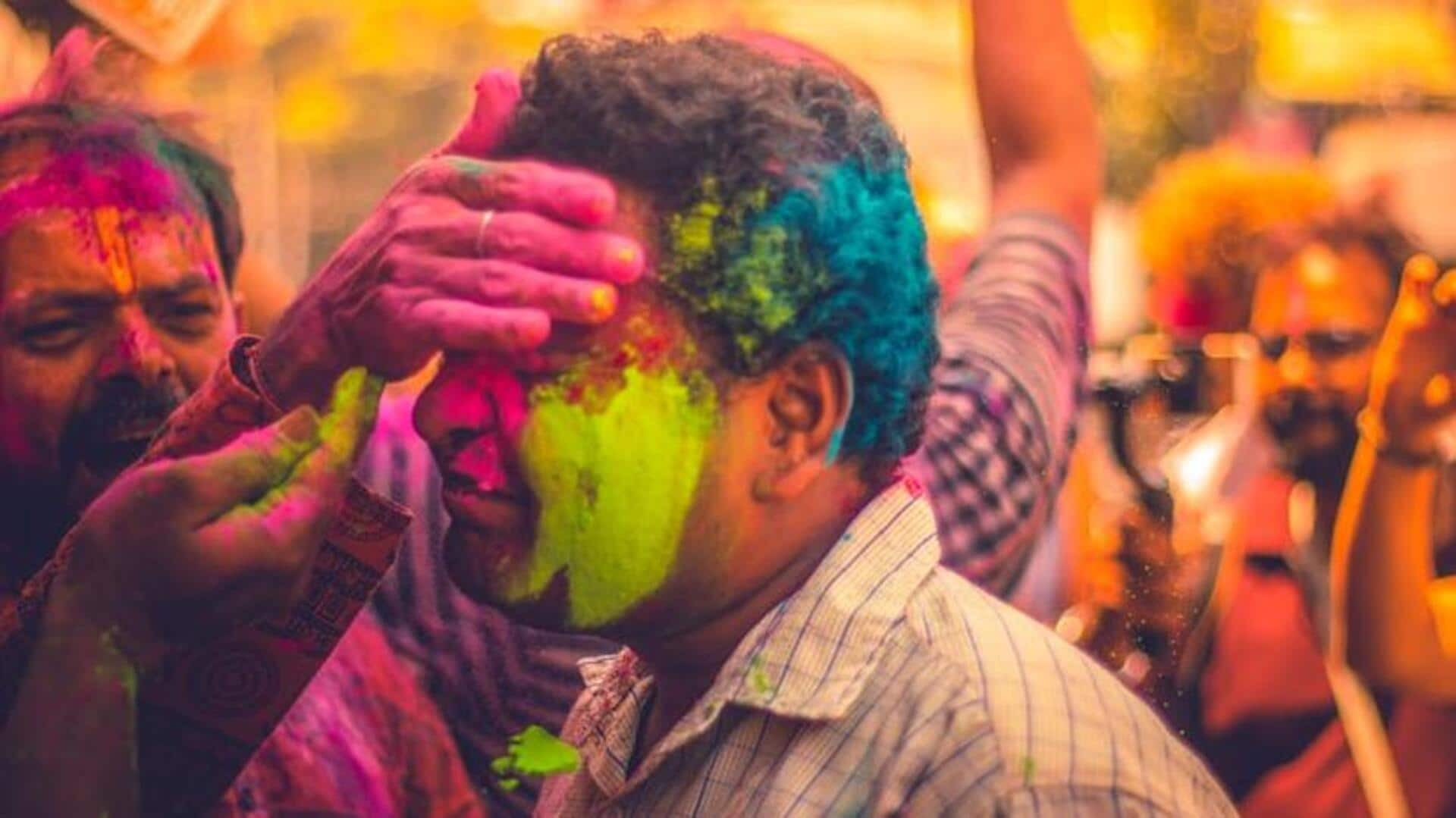
Here's your complete guide to Holi, India's festival of colors
What's the story
Holi, also known as the "Festival of Colors," is a major Hindu festival observed mainly in India and Nepal.
It celebrates the arrival of spring and the triumph of good over evil.
The highlight of the festival is the exuberant play of colors, where people throw colored powders and water at each other.
This jubilant occasion brings people together for communal gatherings, singing, dancing, and feasting.
History
The historical roots of Holi
The history of Holi runs deep, as ancient Indian scriptures like the Puranas attest to its significance in Hindu mythology.
It celebrates the triumph of Prahlad and Hiranyakashipu over his father, symbolizing the victory of faith and goodness over ego and evil.
This vibrant festival has brought communities together across India for thousands of years, making it one of the oldest known festivals.
Diversity
Cultural significance across regions
Although Holi is a pan-Indian festival, the traditions associated with it exhibit stark contrasts across different regions.
While North India's Lathmar Holi involves women chasing and playfully beating men with sticks in Barsana, West Bengal celebrates with the tranquil Basanta Utsav, featuring music and dance at Shantiniketan.
This dichotomy reflects the vibrancy and diversity of India's cultural tapestry.
Eco-friendly practices
Environmental awareness during celebrations
The environmental cost of traditional Holi celebrations has come under scrutiny in recent years.
Many communities now advocate for eco-friendly Holi by using natural dyes made from flowers and plants instead of harmful synthetic colors that can damage skin and ecosystems.
Such initiatives show a growing awareness and a positive shift towards sustainability during festive times.
Safety first
Safety measures for an enjoyable festival
Ensuring safety during Holi celebrations is crucial as large crowds and potentially harmful colors can cause allergic reactions or injuries if not used responsibly.
By wearing protective eyewear or choosing organic colors, individuals can significantly reduce health risks.
Additionally, providing clean water for washing off colors prevents the spread of waterborne diseases after the festivities.
Feast
Culinary delights unique to Holi
Holi wouldn't be complete without the mouth-watering array of special dishes prepared across India's diverse regions.
Decadent sweets like gujiya are a staple, while savory treats like dahi bhalla bring balance to the indulgent menu.
Refreshing drinks like thandai, often spiced with intoxicating bhang, offer a respite from the day's high-energy celebrations.
Truly, food is at the heart of this vibrant festival.